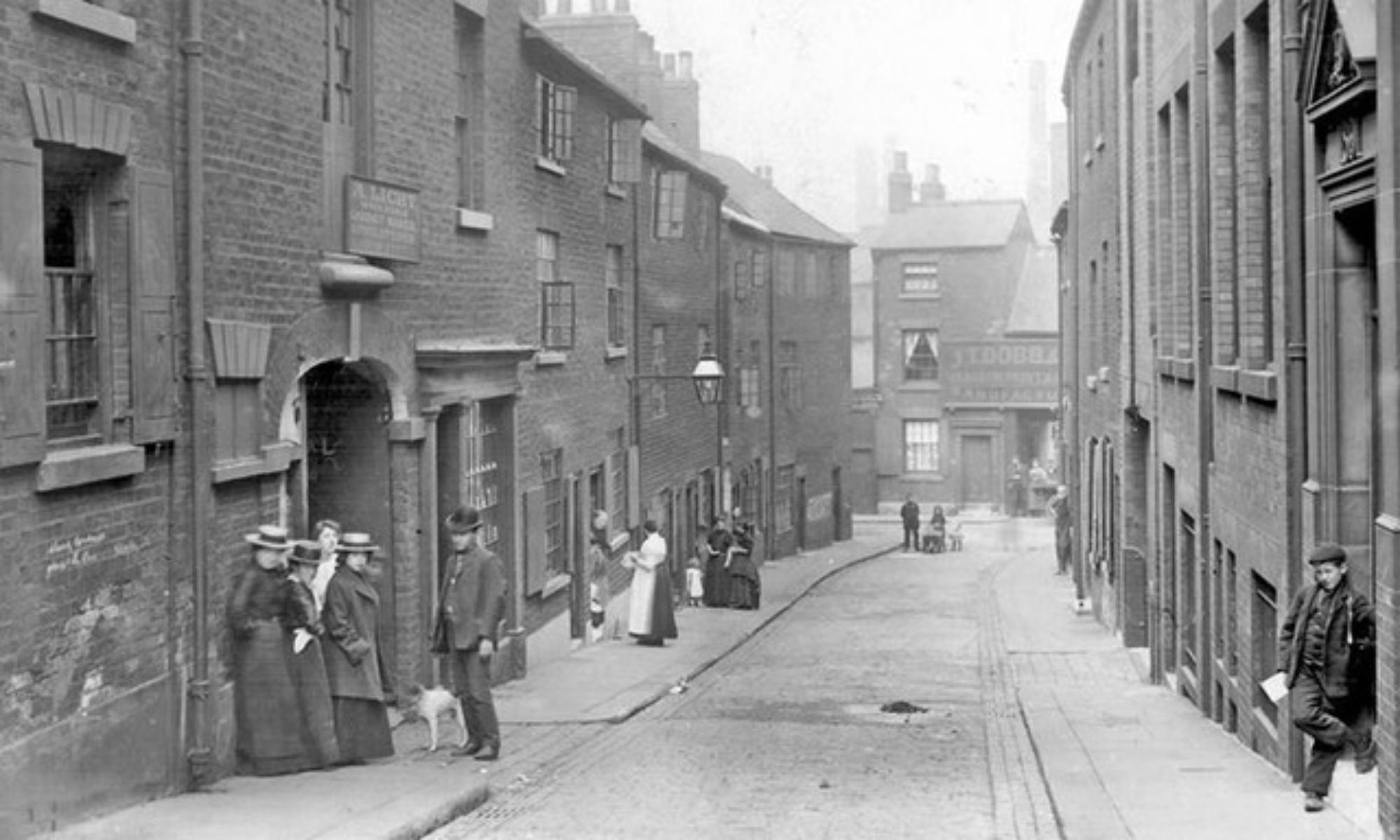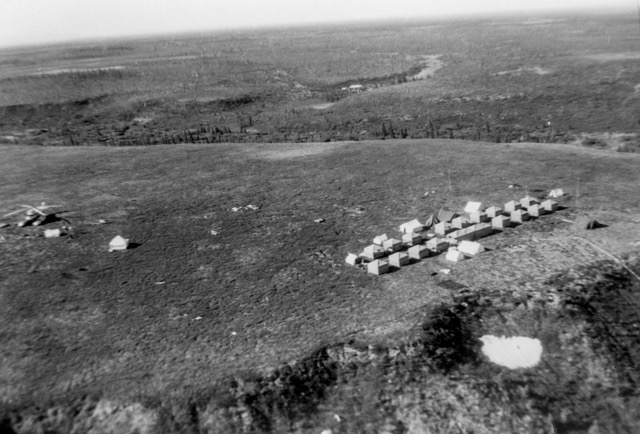EPISODE 575 ALASKAN MINING CAMP ADVENTURES…1959 (SERIES ON PEBBLE MINE)alan skeochMAY 2022
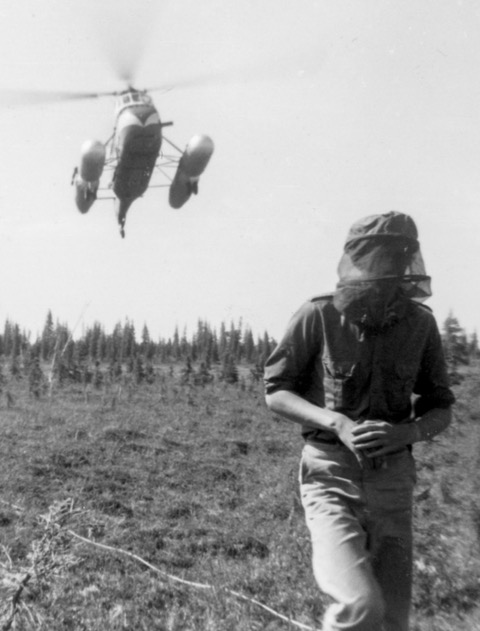
Large mosquito? Don Van Every and Helicopter in Alaska 1959
SUMMER 1959: Don VanEvery, Ian Rutherford, Bill Morrison, Mike Chinnery, Alan Skeoch and Dr. John StaM were flown to Dillingham, Alaska to conduct a Turamgeophysical ground survey in he summer of 1959. From Dillingham the Canadian crew were flown into the Alaskan interior by two SikorskyS 52 helicopters. A camp had been constructed overlooking an Alaska river valley where thousands of sockeye salmon were laying their eggs before they died.We were told the site was a secret. Whether this was true or not I have never been able to prove one way or another. What I doknow is that the site is located overtop a huge area mineralization. To this day, May 2022, no mine has been constructed
The hinterland of Bristol Bay has become one of the most controversial sites in the history of north America mining. All that needs to be
said is “How about the Pebble Mine?” and a stormy debate will follow. “Are you for or against the Pebble mine?”
There was no such debate when we were there in 1959. So let me state and restate some of our adventures and
then look st the Pebble Mine controversy. This is not a tiny story best forgotten. It is one of the most controversial
issues in mining today. Is the Pebble Mine a dead issue? Could be. One of our adventures was linked to the big story.
But we did not know it. One tiny adventure.
alan
ADVENTURES (as memory serves)
1) TWO huge Sikorsky S 52 helicopters piked us up when our F 27 Fokker landed at the
obscure Dillingham fishing village on the Bering Sea not far from the Aleutian Island chain of
south west Alaska. Flying in a helicopter became routine that summer . So much so that we often
sat with our legs outside the open cargo door. Some kind of force held us in place. Centrifugal?
totally enjoyable. The lead pilot awoke us each morning singing over the camp Public address system,
“Let’s get fucking airborne”…and we would fly over the endless tundra to our survey points where we
would be dropped for the work day then picked up. I even had one small misadventure when trying
to jump from the pontoon to the cargo cabin with a 90 pound reel of wire on my back. I missed
and fell through the gap just as lif toff began….distance 10 or 20 feet, hit the soft tundra like hitting
a rough feather bed. I remember asking the pilot “What happens if we hit a sudden downdraft?”
“If I have a sling load I just press this button and drop the whole load.”
“Has that ever happened?’
“Had to drop a whole diamond driller drill unit once.”
“Wrecked?”
“Imagine so, never checked.”
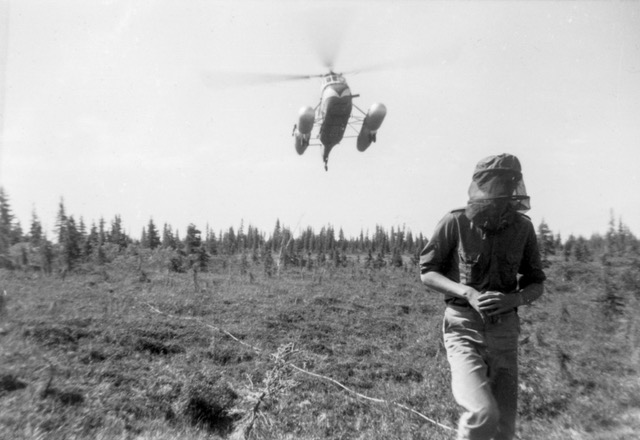
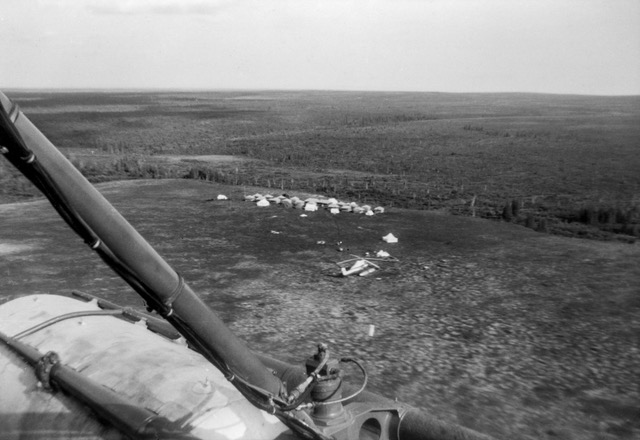
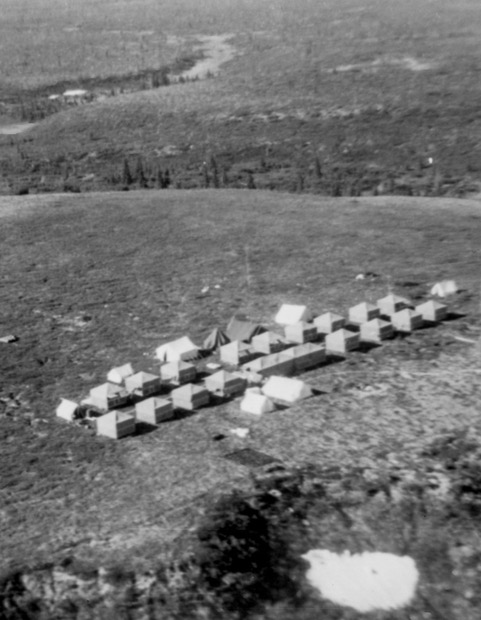
2) WEAPONS: “You boys can expect to be given rifles at base camp…30-06 hunting rifles. Be prepared.” said our boss
Dr. Norman Paterson, one June morning in Toronto.
And sure enough rifles were handed out on our first helicopter ride into the tundra. I still remember my partner, Bill morrison ,
commenting. “How the hell can we carry rifles when harnessed into the Turam? So We just stacked the rifles at
the landing point. Took a few practice shots at stunted spruce trees then forgot about the rifles. Why were these
weapons distributed? The Humble Oil contractor feared we would have trouble with Kodiak bears. I suppose that was
a legitimate fear but it never happened. The closest I ever got to a Kodiak was one day trying to follow Bill up a
river densely thick with tag alder scrub brush. I was about 100 feet behind Bill. Saw his footprint in the river bottom…
a swirl of sandy mud…and made a wrong turn.. I followed a bear who was getting out of our way. Noticed a big patch of
brown fur . Moving. Turned fast . Bill had gone downstream. Bear moving upstream. Nobody hurt. Would the rifle have
been any help?
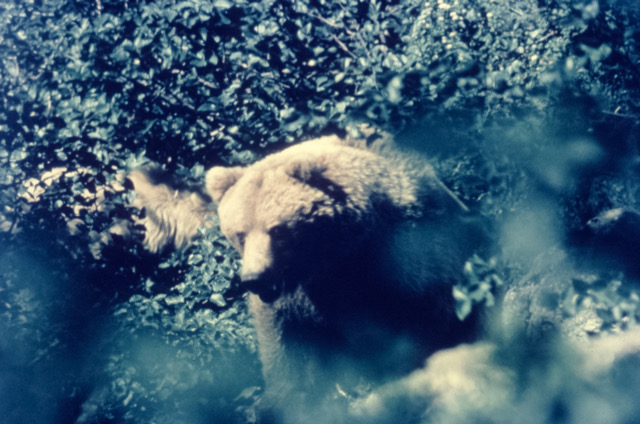

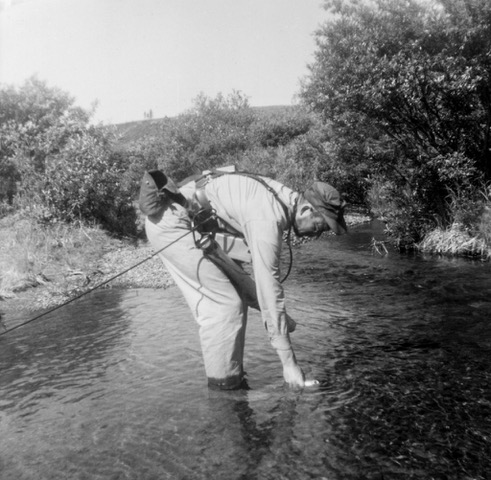
Normally Bill and Were strapped together by a 100 feet of rubber sheathed cable.
Traversing river brooms often made it necessary to disconnect. Hence my
confusion leading to the bear incident. Bears do not like our smell so
they usually get out of the way if we make enough noise. Sometimes a tin can
with pebbles strapped to our waist was all that was needed to alert the bears.


We were not the only people with weapons. The camp had a double purpose
Our job was to pin point anomalies (unknown but surprising blips on our Turam consols).
Then a diamond drillers crew would be ferried to the site to confirm by hard evidence (i.e. diamond
drill core) the nature of the anomaly.
There were 25 diamond drillers in camp… and six Canadian geophysicists. Seemed to me that
they were all armed with revolvers on western styled gunbelts. Maybe not all. But many. If you
carry a gun, there is a tendency to use the gun As one of the drillers did one evening
down by our beaver pond in the river bottom. “Watch this!” And he made a fast draw and aimed
at the beaver some distances busily chewing. Killed the poor beaver.
“Damn, I did not think I was that good.”
Bottom line? The most dangerous place in my Alaska was our camp.

TO BE CONTINUED
“ADVENTURES IN ALASKA = THE PEBBLE MINE CONTROVERSY = TRIUMPH BY ENVIRONMENTALISTS”
ALAN SKEOCH
MAY 2022
